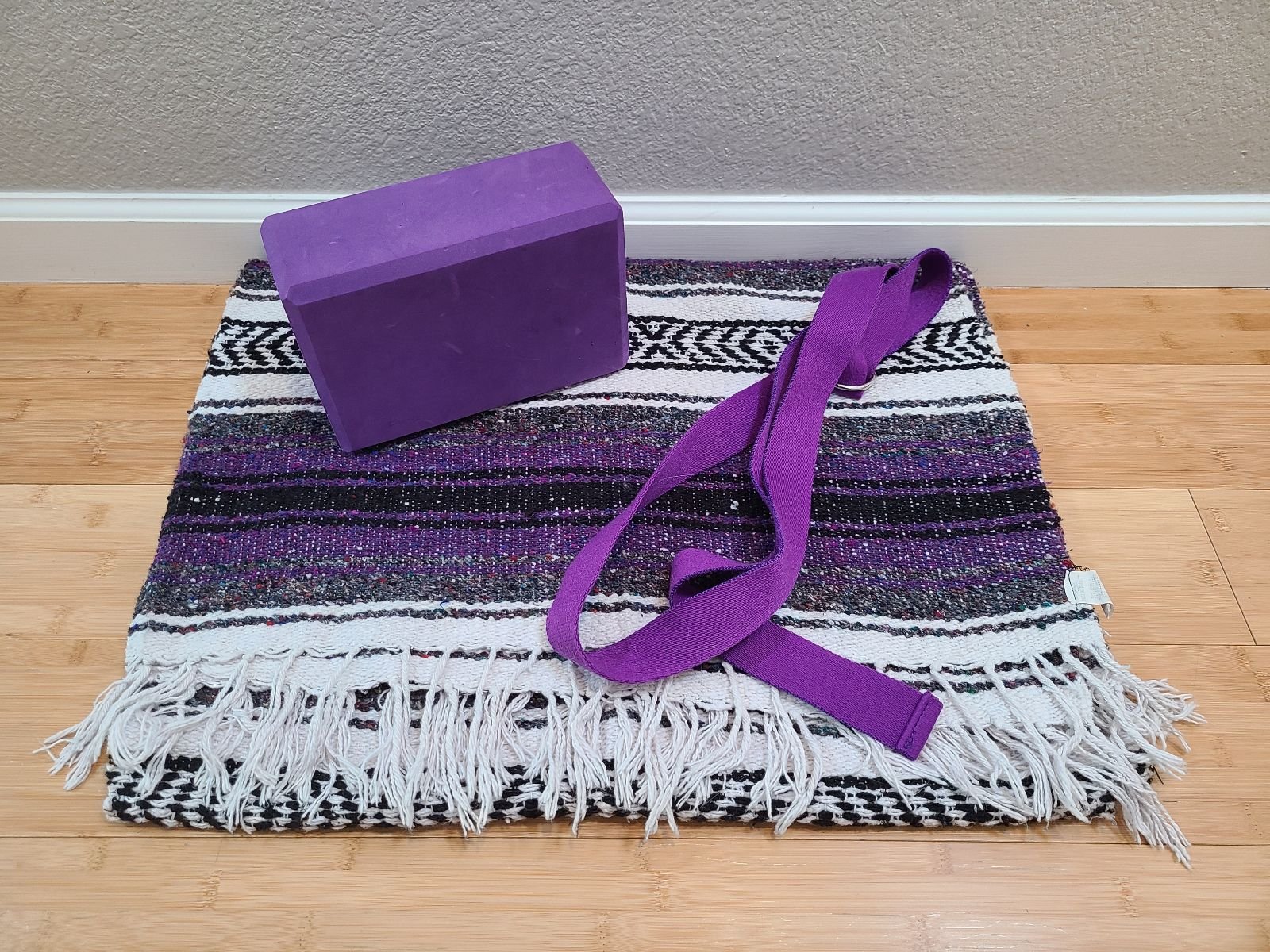Do I need to use yoga props?
/Many people think that yoga props are just for beginners or modifications and opt not to try them, but I argue that everyone needs them.
I am an advocate for yoga being accessible to everyone and there shouldn’t be something (like investing in props) standing in the way of trying yoga or finding a regular practice. Yoga can absolutely be done without props, but beginners and long-time practitioners alike can benefit from using them. Iyengar yoga especially uses props regardless of level.
Props shouldn’t be considered just a method for “reaching” the ideal image of a pose but as a way to explore the pose—as in they can help you focus more on the journey through the pose as opposed to achieving it.
Mats are good examples of yoga props. They are tools that many people use that aren’t necessary for practicing yoga but aid in providing a little cushioning and stability, keeping you from sliding. They are tools to improve your practice, as are the other props.
Other props that are typically used are blocks, straps, blankets, bolsters, and chairs.
Blocks
Though there are many applications for yoga blocks, they are often used to help bring your hands to a stable surface. For example, if you are in a forward fold and can’t touch the ground you can use blocks to rest your hands on. Blocks are generally about 9 inches long, 6 inches wide, and 4 inches deep. You can position the block to rest on different edges based on the level/height that you need. Yoga blocks can be made from different materials like foam, cork, or wood, and therefore their firmness and weight will vary. If you are often moving the block around during your practice or use it to rest your head on during certain poses, you will likely want to avoid wood.
They can also be used to provide resistance. For example, in Bridge Pose you can put a block between your thighs to engage your legs. Your relationship with the pose will change after trying it this way.
Straps
Straps come in 6-, 8-, and 10-foot lengths. The 6-foot strap is sufficient for most of your yoga needs, but if you are taller, you may consider a longer strap. Though it is most common to use a shorter strap, I advocate for having a longer strap as well. Iyengar yoga especially finds many uses for the longer strap to help you access more opening or support in poses.
Bolsters/Blankets
While yoga bolsters come in various sizes and shapes, they are often rectangular and about 6 inches deep/high. The most common use for a bolster is to allow you to sit up higher off the ground, which will help relieve the hips and knees. A bolster will help you sit without having to constantly engage your hip flexors and inner thighs, allowing your knees to open to the outside more comfortably. This also takes strain off the lower back and can help you lengthen your spine. Blankets are used in the same way and folded to make various heights. Anatomically almost everyone needs to sit up on a bolster or blanket when on the ground.
Chairs
Chairs offer support in poses where you don’t want to go too deep. They can be heavy to get into place, and may need to be propped against a wall to make them stable, but they are versatile to work with. Many people dismiss yoga using a chair thinking it is easier, but it is just different. It can still be challenging and beneficial.
There are many online resources on how to use yoga props effectively or you can find a teacher who can introduce you to how and when to use them. You don’t need them, but having them can significantly transform your practice.
If you want to learn with me, sign up for my Yoga Props for Back Care Workshop.



